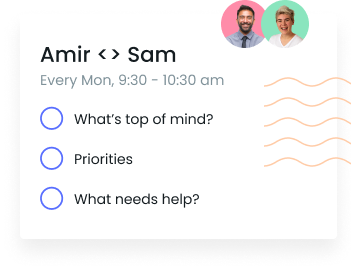Monthly Budget Review Meeting Template
Run structured and effective budgeting meetings with our Monthly Budget Review Mee...
View templateRun structured and effective budgeting meetings with our Monthly Budget Review Mee...
View templateKeep your operations team check-ins focused and efficient! This template is struct...
View templateEnsure that nothing slips through the cracks during your weekly operations sync! T...
View template
Operations meetings are regular gatherings where executives, managers, and team leads discuss the day to day management aspects of the business including procedures and operations. These meetings are an opportunity to examine the organization’s workflows, goals, wins and set-backs. The aim is to ensure that the operational aspects of the organization run smoothly and efficiently.
To conduct an operations meetings, start by setting a clear agenda that covers key operational areas. Invite relevant team members to the meeting and facilitate discussions on each agenda item, focusing on problem-solving, resource management, and process improvements. Then before the meeting ends, document decisions and assign action items.
The purpose of operations meetings is to oversee and enhance the efficiency of business operations including aligning team efforts, addressing challenges, resource allocation, and sharing progress on projects.
In order to make operations meetings more effective, start by ensuring that the meeting has a clear purpose, objective, and focused agenda. Then during the meeting, encourage participation from al team members to gather diverse insights. Try to keep discussions results oriented and time efficient. Once the meeting ends, follow up on action items and measure progress against set goals to ensure accountability and continuous improvement.
While there are many ways to structure an operations meeting (including the templates highlighted above!), there are some commonalities to keep in mind. Try starting your meeting by reviewing action items from the previous meeting, followed by updates on current operations and discussions on any issues or challenges. Be sure to allocate time for brainstorming solutions and improvements. Then end with a summary of decisions made, new action items assigned, and establish timelines for completion.